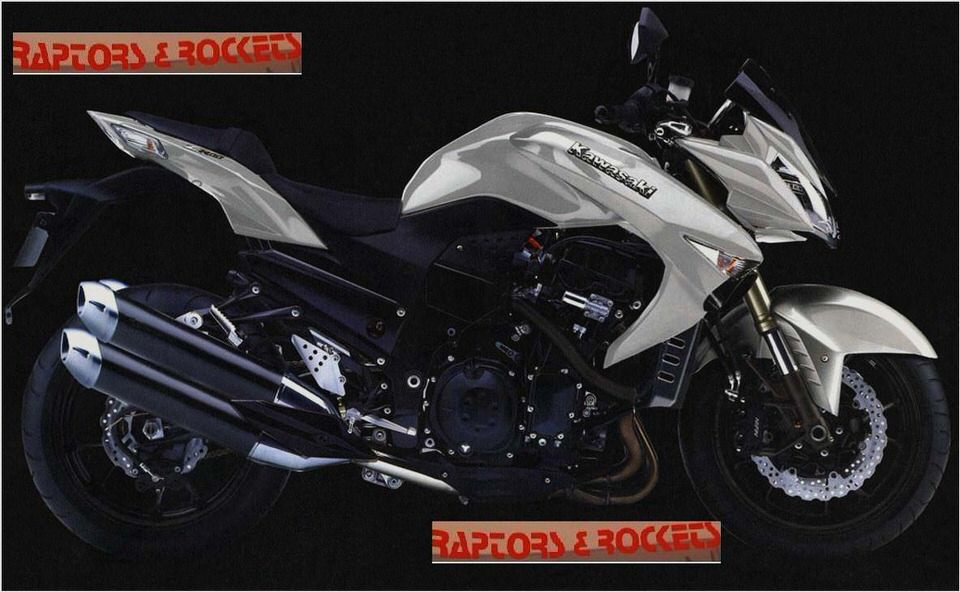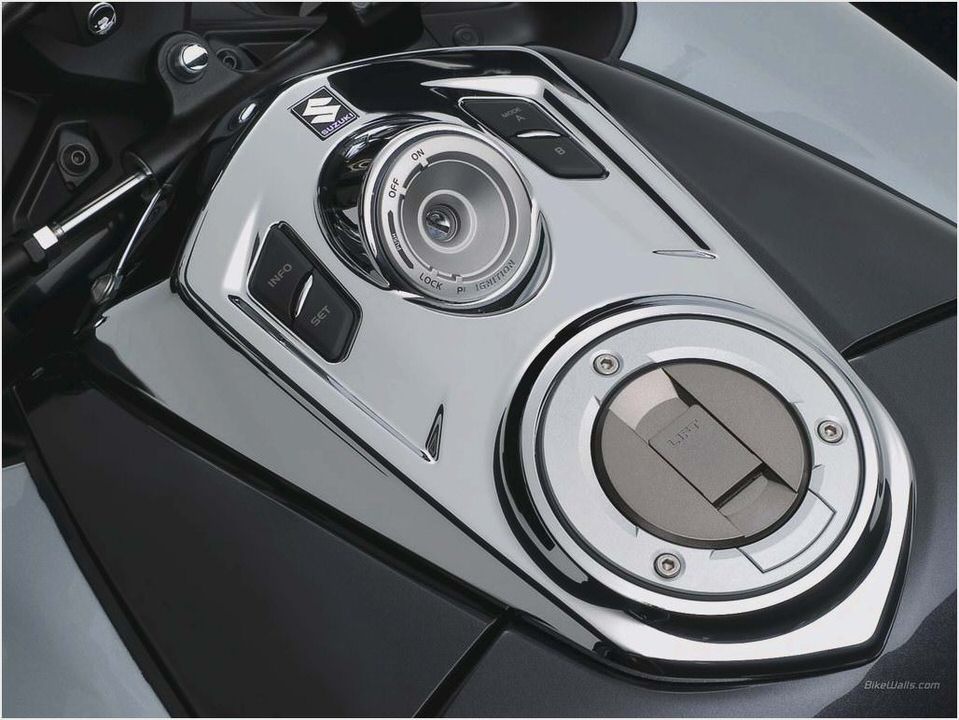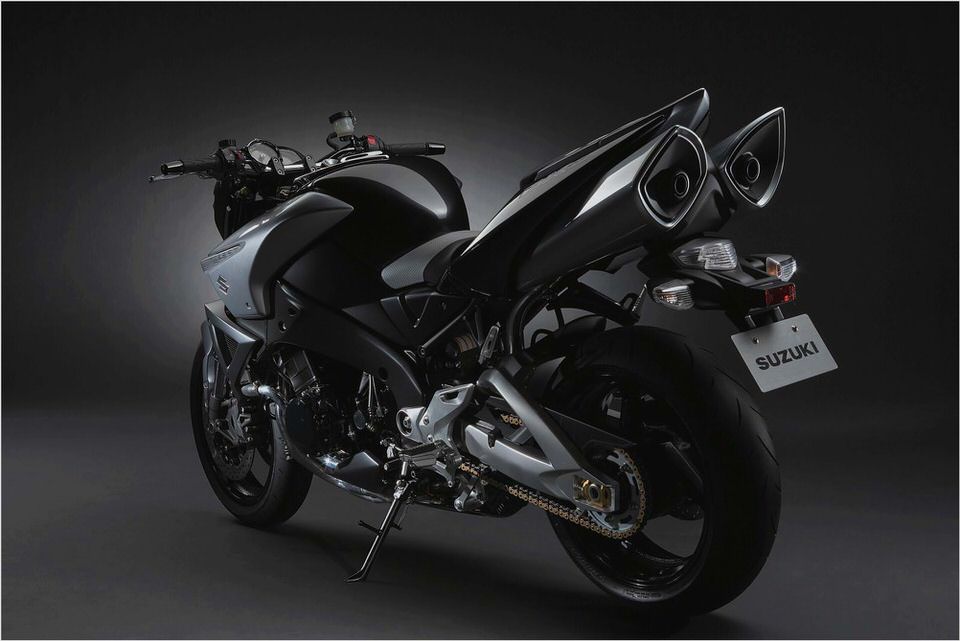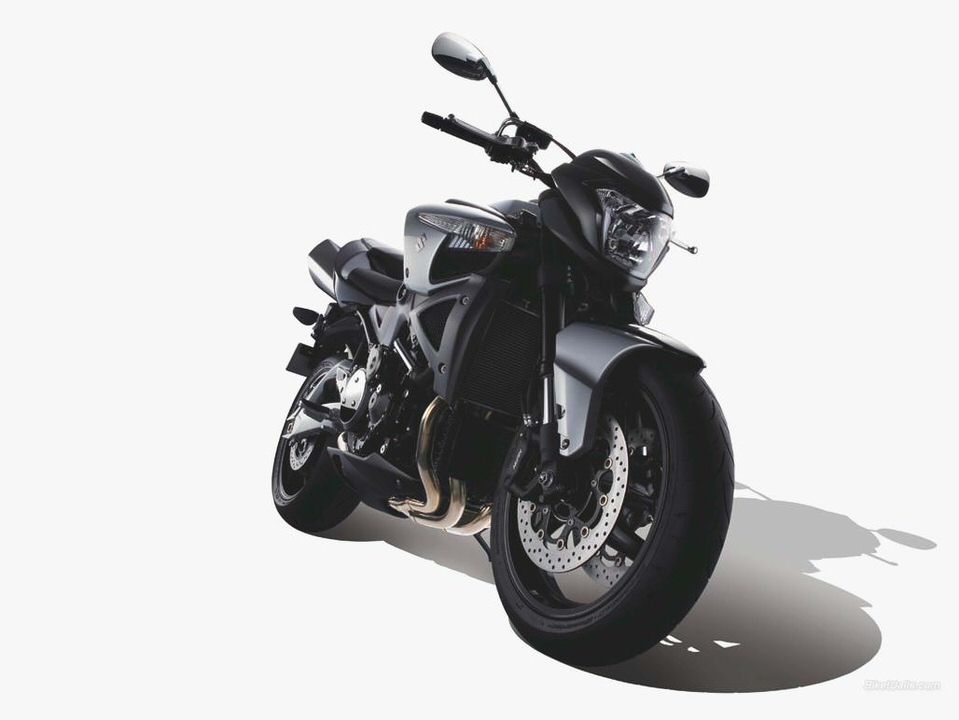
2008 Suzuki B-King
A motorcycle so striking and so unique that it set off a styling revolution with a single public appearance as a concept bike at the Tokyo Motor Show in 2001. Now, the concept has become a production reality, and the genuine article is here.
Backing up its exciting looks with a genuine Suzuki performance. Bringing breathtaking performance, technological excellence and overwhelming styling to the street. Combining strength and personality with muscular torque and exhilarating throttle response.
With 1,340cm3 of displacement and advanced Suzuki Dual Throttle valve (SDTV) digital fuel injection featuring two-way selectable mapping to suit personal preferences. Delivering more efficient combustion and producing more torque, better acceleration and lower emissions.
Wrapped in an advanced aluminium-alloy framed fitted with high quality fully adjustable front and rear suspension and front disc brakes featuring radial-mount four-piston callipers.
A motorcycle with powerful styling to match its strong personality. Built with genuine Suzuki DNA.
Tuned for Torque
Advanced engine management, with digital fuel injection and selectable mapping.
A powerful 32-bit, 1,024-kilobyte ROM engine-management computer runs the B-King’s state-of-the-art fuel injection, ignition and engine management systems, including Suzuki Dual Throttle Valve (SDTV) throttle bodies and a Suzuki Exhaust Tuning (SET) butterfly valve built into the mid-pipe of the 4-into-2-into-1 exhaust, which culminates in a slash-cut, dual-exit underseat muffler. Combined, the fuel injection and engine management systems improve combustion efficiency for excellent throttle response and acceleration while reducing exhaust emissions.
Two downdraft double-barrel fuel injection throttle bodies are mounted side by side, with each tapered, 44mm barrel carrying two fine-atomization, 12-hole fuel injectors, two butterfly valves and a pressure sensor. The primary butterfly valve in each throttle body barrel is controlled by the rider through the twist grip and the secondary valve is controlled by the engine management computer.
Based on primary throttle valve position, engine rpm and a gear selection, the engine management computer incrementally opens or closes the secondary butterfly valve to maintain the proper intake air velocity needed for maximum combustion efficiency and improved throttle response across the rpm range, but especially at low-to-middle rpm. The primary injector’s on-time, which determines the volume of fuel injected into the cylinder, is based on engine rpm, intake pressure (or vacuum) and throttle position. The secondary injector is used under high-load, high-rpm conditions, and operates based on engine rpm and throttle position.
An automatic idle speed control (ISC) system regulates the amount of air fed through the throttle body idle circuits based on engine coolant temperature, producing a stable idle while improving cold starting and reducing emissions immediately after start-up.
The SET system uses a servo-controlled butterfly valve to match engine rpm with exhaust back-pressure, increasing torque delivery.
A unique Suzuki Drive Mode Selector (S-DMS) system allows the rider to use a switch mounted on the fuel tank to select one of two engine control maps to suit personal preferences. The two maps are designated A and B, and can be selected when the engine is idling in neutral. The instrument panel displays which map is selected, with A equalling normal power delivery.
The B setting makes torque delivery more linear.
A built-in pulsed-secondary AIR-injection (PAIR) system controlled by the engine management computer injects fresh air from the airbox into the exhaust ports, igniting unburned hydrocarbons. A large-capacity catalyzer is built into the exhaust system, along with an oxygen sensor. When combined, the emissions control systems reduced hydrocarbon, carbon monoxide and nitrogen oxide emissions.
The B-King meets tough Euro 3 and Tier 2 emissions standards, and is one of the cleanest-running large-displacement Suzuki motorcycles ever built.
The B-King’s powerful 1,340cm3 four-cylinder, 16 valve, DOHC, fuel-injected engine is built with the latest Suzuki high-performance core technologies and the same engineering excellence that has made the GSX-R line so successful in production-based road racing.
Suzuki engineers started with a bore and stroke of 81mm x 65mm for a bore/stroke ration of 0.802:1, with four valves per cylinder set in a compact combustion chamber producing a compression ration of 12.5:1. The valves are made of titanium, the intakes measuring 33mm and the exhausts measuring 27.5mm, and are set at an angle of 14 degrees from the cylinder centreline for a narrow included angle of just 28 degrees.
Titanium valves are lighter than conventional steel valves, allowing the use of a single spring on each valve instead of double springs, reducing inertia weight while maintaining accurate valve control despite aggressive cam timing and lift. Each intake valve opens 43 degrees BTDC and closes 58 degrees ABDC for 281 degrees of duration, while each exhaust valve opens 62 degrees BBDC and closes 24 degrees ATDC for 266 degrees of duration.
Intake valve maximum lift is 9.0mm and exhaust valve maximum lift is 8.6mm. Valve lash is adjusted using replaceable shims positioned underneath bucket tappets, a system which is compatible with high rpm and improves valve adjustment stability. The cams are driven off the crankshaft by a link-plate chain located on the right side of the engine, with a hydraulically operated automatic cam chain tension adjuster.
Forged aluminium-alloy slipper pistons have cutaway sides and short, 18mm-diameter wrist pins to reduce weight, and are carried by chrome-molybdenum-steel connecting rods which are finished with a shot-peen treatment to harden the surface and increase overall strength. The connecting rods ride on a forged, steel-alloy crankshaft.
Each piston’s upper compression ring is L-shaped so combustion pressure will push it out against the cylinder wall, improving sealing and converting more energy into downward force. The oil control ring is electro-plated with a chrome-nitride coating applied in a vacuum chamber using a Physical Vapour Deposition (PVD) system. The chrome-nitride PVD coating is harder and smoother than conventional chrome plating, reducing friction while further improving cylinder sealing.
Each bore in the aluminium-alloy cylinder block is plated with Suzuki’s own race-proven nickel-phosphorus-silicon-carbide coating, which reduces friction and improves heat transfer, durability and ring seal and is known as Suzuki Composite Electrochemical Material (SCEM). U-shaped cutouts in the side of each cylinder bore (underneath the bottom of the piston stroke) are larger than conventional ventilation holes, allowing air trapped underneath each descending piston to quickly escape to adjacent cylinders where the pistons are rising, reducing pumping losses. Ventilation from the crankcases to the 9-liter airbox is improved by the use of one-way reed valves.
A gear-driven balancer shaft reduces vibration, allowing the engine to be mounted rigidly in the chassis.
The B-King features a six-speed wide-ratio transmission and a hydraulically operated Suzuki Clutch Assist System (SCAS). The back-torque-limiting SCAS design uses a race-proven ramp-and-cam system to not only reduce pressure on the clutch plates under acceleration without using stronger springs. Along with precisely engineered master cylinder/slave cylinder piston ratios, the system reduces the amount of hand force needed to pull in the clutch lever, increasing rider comfort.
The feel delivered through the clutch lever to the rider at the clutch engagement point is improved by a new friction material applied to the friction plates in a new pattern.
A large-capacity, curved radiator is fitted with two 160mm electric fans operated by the engine management systems based on coolant temperature instead of a conventional thermostat, resulting in more precise control of engine operating temperature. A 10-row oil cooler is mounted underneath the radiator.
A High-Tech Chassis, With Aluminum-Alloy Frame

The B-King’s twin-spar aluminium-alloy frame is a high-tech assembly of complex shapes built using five precision castingsa steering-head/wrap-around front section, a left main spar and swingarm pivot section, a right main spar and swingarm pivot section, and two cross pieces. The wall thickness and shape of the individual castings is engineered to precisely produce the right rigidity when all the pieces are welded together. The aluminium-alloy rear swingarm combines three precision pressure-castings, also engineered to deliver the optimum rigidity.
Inverted KYB front forks feature modern damping cartridges with adjustable compression damping, rebound damping and spring preload. A beefy lower triple clamp has three bolts on each side, and a steering damper is standard equipment, mounted on the upper triple clamp, beneath the handlebars.
The KYB single rear shock is also fully adjustable for compression damping, rebound damping and spring preload, and works with the swingarm through a progressive linkage.
Stylish three-spoke cast aluminium-alloy wheels measure 3.50-17 inches in the front and 6.00 x 17-inches in the rear. Dunlop sportmax qualifyer radial tyres are used on both wheels, the front a 120/70ZR17 and the rear a full 200/50ZR17.
Modern radial-mount Nissin opposed-four-piston front brake callipers feature differential-bore aluminium-alloy pistons, the leading piston on each side measuring 30mm and the trailing pistons measuring 34mm to equalize braking force along the full length of the pad. A radial master cylinder improves rider feel at the brake lever. The two fully floating front brake discs each measure 310mm (12.2 inches) in diameter and are 5.5mm thick.
The single-piston rear brake calliper operates on a 260mm (10.2-inch) disc.
Advanced Lighting And Complete Instrumentation
A stylish module carries the B-King’s 60w high-beam/55w low-beam headlight, and clear lens front turn signals are built into the integrated front bodywork. The double-clear-lens taillight assembly features LED tail and brake lights, and carries the clear-lens rear turn signals.
A specially designed instrument panel built into the B-King’s headlight module is centred around a analog tachometer with an LCD display digital speedometer and gear position indicator to the right of the tachometer. LCD displays also include a clock, odometer, dual trip meters, maintenance intervals, running time, average speed, fuel level, engine temperature and S-DMS selection.
Indicator or warning lights are included for turn signal use, fuel injection, water temperature, oil pressure, neutral selection and high-beam use. The B-King logo is displayed in the instrument panel when the ignition is turned on.
Notable details
Detail touches abound on the B-King. Mesh grills on the tank side covers, the radiator cover and the centre muffler cover. A three-form front fender.
Smooth, combined footpeg brackets and swingarm pivot covers. A tank-mounted ignition switch. Chrome and lustrous paint strategically applied to emphasise the finish and texture of each part.
A pentagon motif evident in unique designs for the front brake master cylinder and its fluid reservoir, the front brake callipers, and the front brake disc inner rotors. This is a motorcycle with the fine details a rider could spend hours appreciating, even when the B-King is parked inside a garage after a day’s exciting ride.
Your One And Only
The 2008 Suzuki B-King combines revolutionary design and styling with 1,340cm3 of genuine Suzuki high-performance engineering. Refined and tuned to produce prodigious torque and breathtaking acceleration across the entire rpm range.




- 2011 Suzuki GSX-R 750 Street Test – Ultimate MotorCycling
- Suzuki Plug-In-Hybrid Concepts
- Suzuki Carburetor Troubleshooting eHow
- Suzuki Bandit 1200 Specs eHow
- Suzuki GS500E – review and opinion – Don’t mock the GS500
